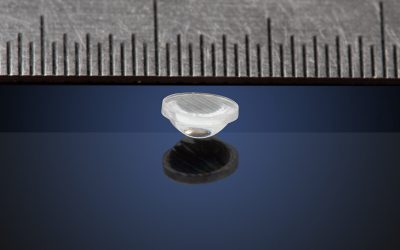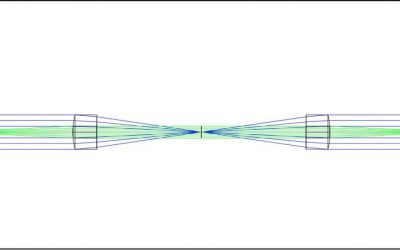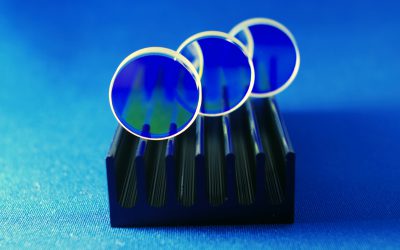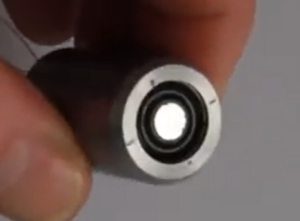Introduction to f-theta Lenses In the landscape of optical systems, the introduction of f-theta lenses is an important chapter, offering a solution to the challenges posed by traditional lenses in laser scanning applications. As laser technology becomes more...
Blog
Exploring LIDAR Lens Design: Innovations and Applications in Optical Engineering
by Victor Argueta | FAQ, lens design, optical design
Introduction LIDAR, short for Light Detection and Ranging. In recent years, LIDAR has emerged as a transformative force across a multitude of industries, revolutionizing everything from autonomous vehicles to archaeology. But what exactly is LIDAR, how does it work,...
Telecentric Lens Design: Enhancing Precision in Optical Systems
by Victor Argueta | FAQ, lens design, lens design consulting, machine vision, optical engineering
Introduction to Telecentric Lenses An important goal in machine vision applications is taking measurements in a consistent, accurate, and precise manner. This can include measuring the dimensions of manufactured parts to guarantee they are within the design...
What is Birefringence?
by Victor Argueta | FAQ, optics, optics definitions, science
In a previous post, we explained the concept of a material refractive index in optics in the context of optical design. Something that we didn’t review however is that many materials have two, three (and even more) different refractive indices depending on the...
5 Applications of Cylindrical Lenses
by Victor Argueta | FAQ, lens design, optical design, optics
When thinking of a ‘lens’, most people have the image of a spherical lens in their mind, but there are different geometries for lenses, and one of the most common is the cylindrical lens. What’s the difference between spherical and geometrical lenses? And what...
4 ways signal noises impact optical devices
by Victor Argueta | opto-elelctronics
Optical engineers focus their design efforts on the optimization of the optical components and image analysis to reduce aberrations and other unwanted image distortions. However, the optical components are not the only area where a light signal can be...
Medical Use of Photodiodes
by Victor Argueta | FAQ
Not all optical systems create images. In some systems, detecting light intensity is enough to meet an application requirement. For those systems, it’s possible to convert an optical signal into an electrical signal using electronics and photodiodes. In...
Understanding RMS Wavefront Error: An In-Depth Exploration | OFH
by Victor Argueta | optical design, optics, optics definitions, Zemax
Introduction to RMS Wavefront Error As mentioned in several articles in this blog, aberrations are of great relevance when designing an optical system. The objective being to design a system that creates a “good image”. However, there are different metrics to...
Design considerations for microlenses and lensarrays
by Victor Argueta | FAQ, lens design, optical design
As optical systems are reduced in size, we encounter new engineering challenges when analyzing and designing lenses. These are issues that we usually don’t see when working with larger elements. This article will review some of the challenges when designing...
Light Source Safety Calculator
by Victor Argueta | illumination, OFH, optics definitions
One important aspect of any design is user safety. This is especially important when using light sources like lasers and LEDs that may be observed by the naked eye. Disregarding safety can lead to product recalls, lawsuits, and harm to users. To protect users, a...
Deciphering 4f Optical Systems: A Journey into Fourier Optics
by Victor Argueta | lens design consulting, OFH, optics, optics definitions
Introduction A 4F optical system is a system architecture that uses Fourier Optics. In this article, we will explain why we need them and how to design a simple 4f correlator. We will leave out most of the mathematical derivations, but if you are interested...
Mastering Spot Diagrams: Analyzing Optical System Quality | OFH
by Victor Argueta | FAQ, lens design, optical engineering, optics definitions
Introduction to Spot Diagrams As optical engineers, we use different tools and techniques to evaluate the performance of an optical design when simulating the system in a ray tracing program. One of those tools are spot diagrams. They may be a little bit confusing to...
Designing optical systems with hot and cold mirrors
by Victor Argueta | optical engineering, optics definitions, science
Filters for selecting specific wavelengths are common in optical systems. In our microscope design article we explained the use of dichroic mirrors to select fluorescent wavelengths. In some applications optical engineers need to filter out high (UV light) or lower...
Mastering Relay Lens Design: Enhancing Optical Systems | OFH
by Victor Argueta | FAQ, lens design consulting, Zemax
Introduction Optical relays, an integral component of various optical systems, play a crucial role when the user's proximity to the observed object is limited or when specific image transformations are required. A prevalent example of this is found in relay lenses,...
5 things to know about refractive index
by Victor Argueta | FAQ, optics, optics definitions
Introduction The refractive index is one of the basic concepts in optical sciences. Same as volume, and density, the refractive index is a fundamental property of all materials. However, not only materials that are used in optics have a refractive index. For example,...
Benefits of Multiphysics Design
by Victor Argueta | mechanical design, optical design, opto-mechanical design, Zemax
Simulating any optical system in Zemax is a fundamental part of our optical design process. Among many reasons, we simulate in Zemax so we can evaluate the optical performance, whether in terms of aberrations for imaging systems or power efficiency for...
Moving from RasberryPi image processing to an MCU
by John | machine vision
We’ve built a number of image processing systems that use Raspberry Pi and other single board computers together with OpenCV and other Python libraries such as Scikit image and Dlib. For example, take a look at this defect inspection system This works well for...
How Aspheric and Freeform lenses work
by Victor Argueta | lens design, OFH, optical design, Zemax
A key aspect of an optical product development is the creation of a quality optical system design optimized to reduce aberrations and system cost. In an attempt to reach a balance between cost and performance, optical designers have created lenses with different...
Benefits of Zemax’s Black Box Lenses
by Victor Argueta | lens design, optical design
When integrating off the shelf lenses into optical systems, it is essential to have full information about how a lens will perform with other elements in the system. When multiple component vendors ( ie electronics, mechanical, optical) are involved, data...
Types of Optical Prisms
by Victor Argueta | mechanical design, optical design, optics, optics definitions
One of the most famous images in the history of optics is that of Sir Isaac Newton with a beam of white light going through a glass prism and a rainbow coming out the other side. It is one of the most famous optical experiments, not only for its simplicity, but also...






















